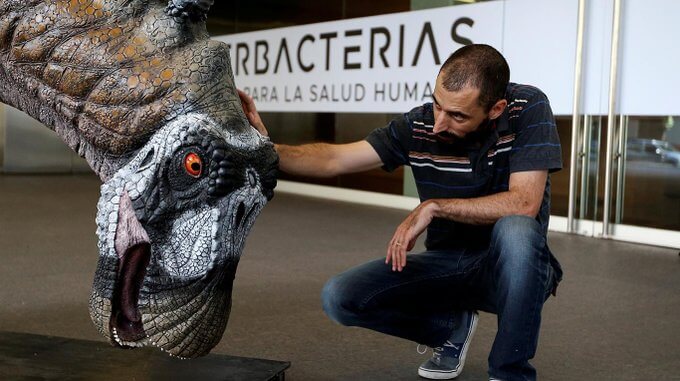A new species of dinosaur has been discovered in the Bajada Colorada region of Patagonia, near Neuquén, which has some of the longest protruding neck spines of any dinosaur yet discovered.
The new discovery has been named Bajadasaurus pronuspinax, reported Nature magazine, and is a new type of Dicraeosaurid sauropod, which are herbivorous dinosaurs with forward-pointing spikes down their spine. This attribute was first discovered at the beginning of the 20th century in Tanzania, where German Paleontologist and Geologist Werner Janensch found almost-complete skeletons of these creatures.
Another Dicraeosaurid sauropod was discovered in Patagonia in 1991 and since, fossils of these spiked creatures have been found in China and North America, as well as Central and North Patagonia.
Encuentran en #Neuquén una nueva especie de #dinosaurio saurópodo
— CONICET Dialoga (@CONICETDialoga) February 4, 2019
Fue bautizada con el nombre de Bajadasaurus pronuspinax. Investigadores del #CONICET fueron responsables del hallazgo. #CienciaEnTuVida
Link a la nota: https://t.co/0wPrqizAoj pic.twitter.com/DEVDEpZJ0m
Sauropods were large herbivores that developed different strategies to deter predators, such as an extremely large size and fast growth, whip-like tails or armoured skin. They lived from the late Triassic period (around 230 million years ago) until the end of the late Cretaceous period (70 million years ago).
The Dicraeosauridae, for their part, developed long bony spikes down the length of its neck which is suggested to be a passive protective measure against predators, keeping them at bay even when the animal was feeding.
The fossils were discovered when Argentine Pablo Gallina, an investigative paleontologist from the country’s National Scientific and Technical Research Council (CONICET), noticed two teeth protruding from a rock in the Neuquén area. He then called in a group of scientists who unearthed more fossilised bones, including the best-preserved Dicraeosauridae skull ever found, as well as one of the neck-spines.

“It’s comparable to scoring a goal like the one Maradona scored against the English in ‘86,” Gallina told Clarin, referring to the Argentine football player’s infamous “hand of god” goal in the 1986 World Cup quarter finals.
A model of its spiny neck was exhibited in the Cultural Science Centre in Buenos Aires, where the length and apparent fragility of the spines can be clearly seen.
“We think that had they been just bare bone structures, or covered only by skin, they could have been easily broken or fractured with a blow or when being attacked by other animals, Gallina explained in the CONICET article. “These spines must have been covered by a keratin sheath similar to what happens in the horns of many mammals.”
Other Dicraeosauridae had spikes as long as the Bajadasaurus pronuspinax, but pointing backwards, and others had forward-pointing ones, but none as long as this most recent paleontological discovery on Argentine territory.










